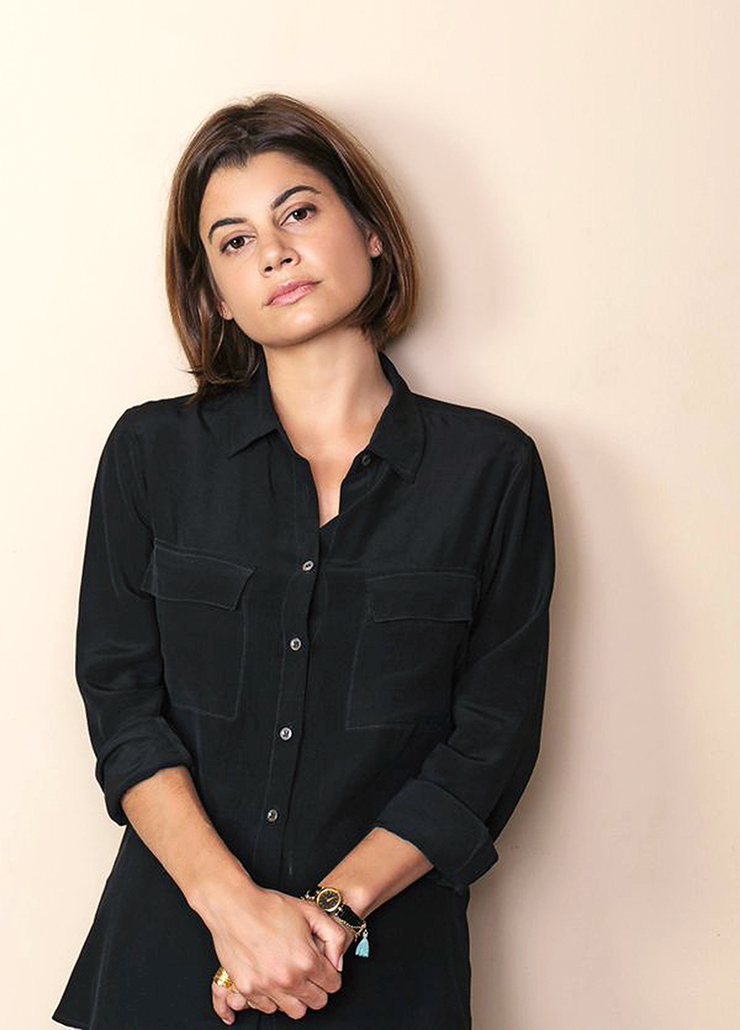
Jarrett Gregory is what you might call a young curator. Not because of her age (though the soignée Los Angeles-based New Yorker is just 33), but young in the sense that she is fresh, forward-thinking and not weighed down by a responsibility to tradition. Like most forces to be reckoned with, Gregory has been well groomed, cutting her teeth at the Whitney Museum of American Art.
While there she garnered an instinct for installation from chief curator Donna De Salvo and forged lasting relationships with countless artists including Maurizio Cattelan, Urs Fischer and Jordan Wolfson while producing the museum’s 2006 Biennial. At the New Museum she got a crash course in nimble production with shows including “Ostalgia” and the building’s inaugural biennial, “Younger Than Jesus.” After moving to California, as the associate curator of contemporary art at LACMA, she learned the finesse of fundraising from Michael Govan, the museum’s director, and staged the celebrated Pierre Huyghe retrospective. Now, after spending a dozen years studying in America’s boldest institutions, she’s confidently branching out on her own.
“They gave me carte blanche,” says Gregory of the unprecedented opportunity that Armory Show director Benjamin Genocchio entrusted in her as curator of a groundbreaking exhibition for the Focus section in the March fair at Pier 94. Since its inception, the Focus section has gathered artists from similar geographic regions—Berlin in 2010; China in 2014—but Gregory’s 12 artists were culled from 10 countries spanning five continents.
“The Focus section has historically been a place of discovery,” says Genocchio, “where collectors can find something they won’t see anywhere else.”
Eschewing boundaries of location, the perspective-shifting tone will remain intact in Gregory’s show, “What Is To Be Done?”, named for the 1863 Nikolai Chernyshevsky novel that became kindling for the Russian Revolution. “It’s a work of literature that went far beyond something to read,” says Gregory. “It galvanized people in a way you don’t expect an artwork to do.”

Such is the case with the show’s 12 artists whose hometowns range from Chicago to Ho Chi Minh City. They find their common thread acknowledging the political, economic and social circumstances surrounding their work—establishing the theme that art can inspire change. “What I really wanted to do was a show that reconsidered what political art could be,” says Gregory. Right off the bat, visitors will be stripped of a sugar-coated worldview by Johan Grimonprez’s Blue Orchids, documenting the global arms trade including the shocking involvement of American politicians. On another wall, Mathilde Rosier’s Loose Alphabet features colorfully costumed Kenyan dancers and projects the footage upside down. “On one hand you have a film bombarding you with narratives you don’t fully understand,” she says. “The other film is a therapeutic way to disconnect from the narrative and just look.” Together, they represent the many layers of understanding the world.
The idea took shape in Moscow, where she first encountered artists making work without market support—entirely unmotivated by an economic return. But it was a viewing of Renzo Marten’s Enjoy Poverty that catalyzed the show. In the film, Martens makes the claim that among all the exports (gold, diamonds, cocoa) in the Democratic Republic of the Congo, poverty is its most lucrative resource. International photographers who snap a dying child may earn 50 euros per image. Meanwhile, locals working on plantations make $1 every three days. Martens encourages the Congolese to photograph their own poverty and attempt to earn the profit that would otherwise go to outsiders. “There’s an understood idea that art should be aware and subtly point but not touch,” says Gregory. “Renzo isn’t afraid to get messy.”
Neither is Gregory. Over a glass of wine in Manhattan’s East Village she recalls a moment 28 years prior, when on a visit to a Matisse retrospective at the MoMA, she encountered The Dessert: Harmony in Red and learned that the artist had intentionally left a stripe of green in the painting to mark its evolution. “That was probably the first instance where I felt a real curiosity,” says Gregory.
Her curiosity is only growing: Since leaving LACMA in December she’s visited studios from Vietnam to Ghana and guided a number of international projects including advising Marten’s Rem Koolhaas-designed museum in the Congo, LIRCAEI, and curating a group show at the Razem Pamoja Foundation in the Mathare slum of Nairobi. “Her perspective is an incredibly intelligent, curious, and relevant one,” says Genocchio. One that’s only getting broader.




